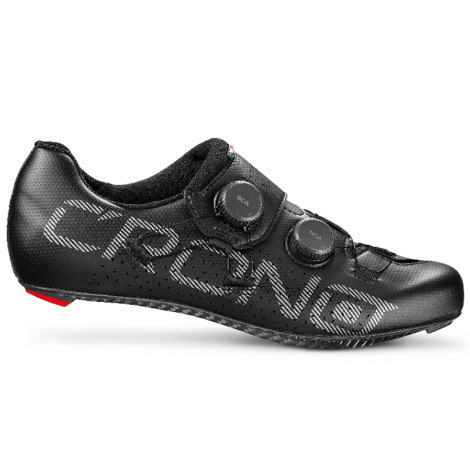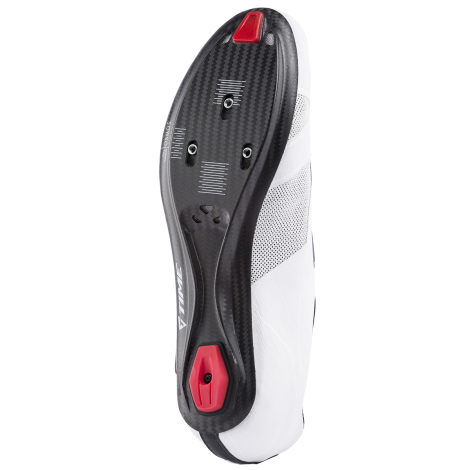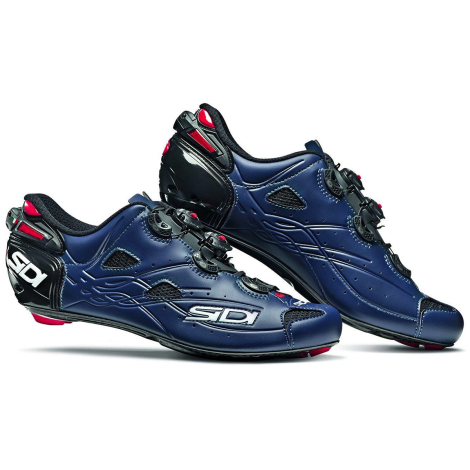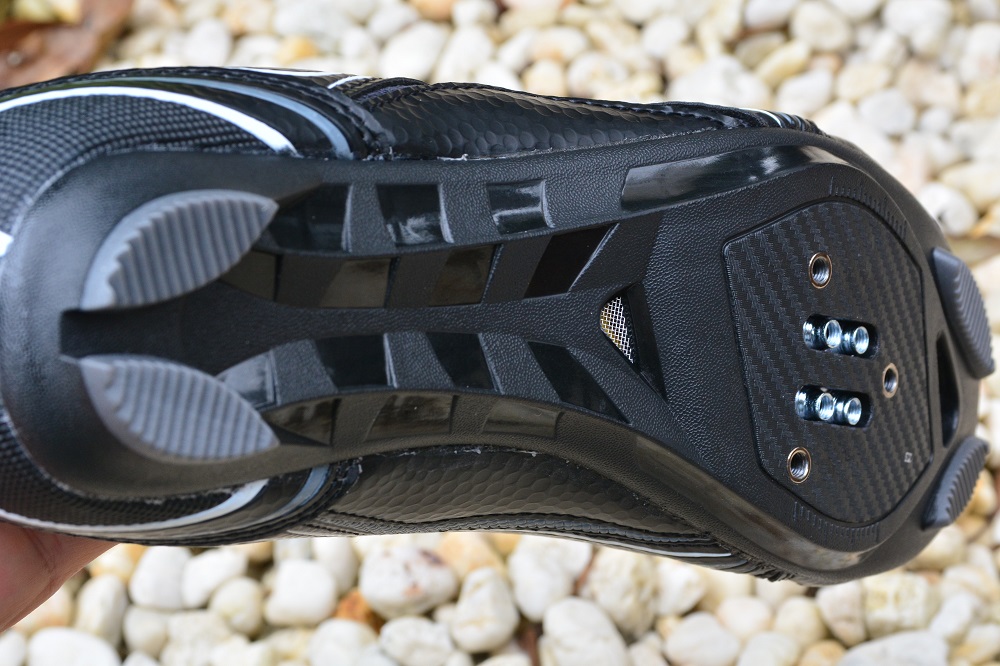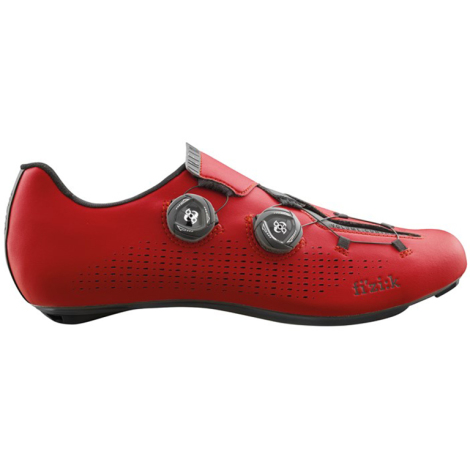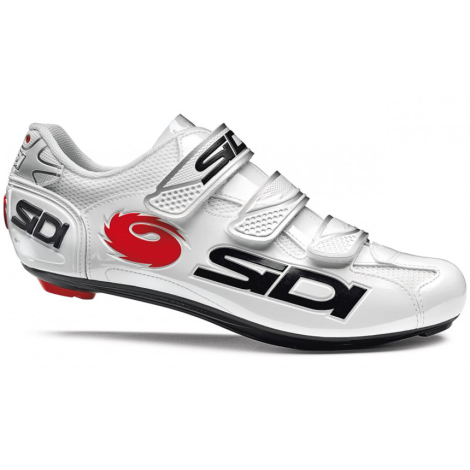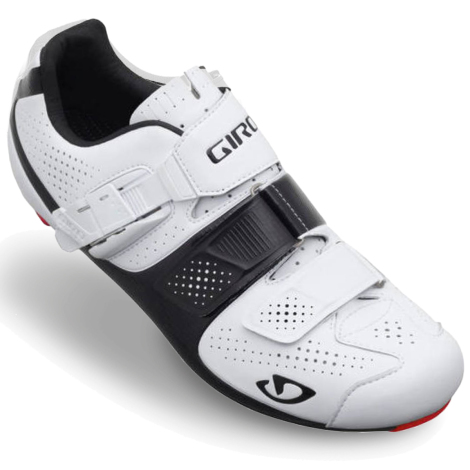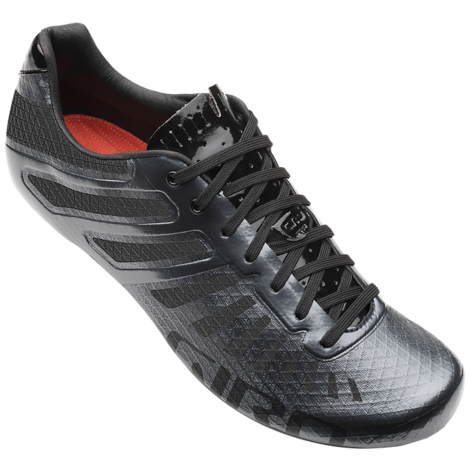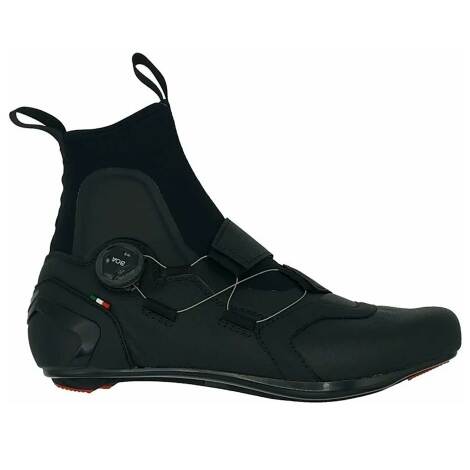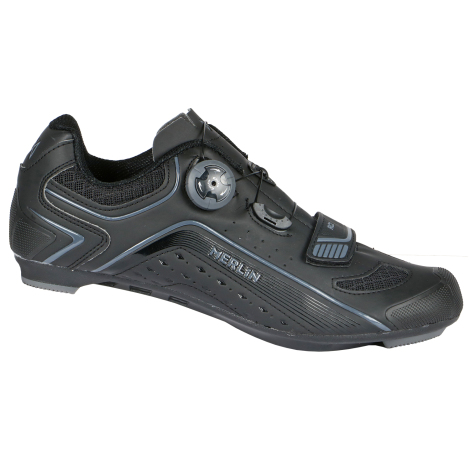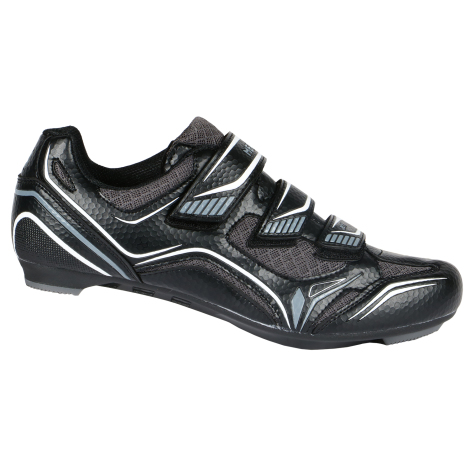Road cycling shoes, much like bikes themselves, vary hugely in terms of price and specification. Let’s look at the main components and differences to help you decide what’s for you. Our road shoe selection is one of the biggest ranges available in the UK, see our full range and link to FAQ’s here.
Road cycling shoes may all look similar with sleek lines and stiff, slippery soles but they are packed with features which can make a massive difference to your performance and comfort.
Road cycling shoes all have basically two sections; an upper and a sole but like all accessories in cycling, when you start to look closely there are so many variations it can become bewildering to decide what’s best for your needs.
Sole
The sole is the heart of a road cycling shoe and has the most impact on performance. The soles provide support for your feet and also provides two out of the five contact points between you and your bike.
The stiffer the sole the less energy is wasted; all power is sent straight to the pedal. The downside is they are not as comfortable as ones with a bit of ‘give’ or some internal padding to dissipate road vibrations from the pedals. Therefore there’s got to be a balance struck. Racers will forgo comfort for speed while most leisure cyclists would prefer a little more comfort for a little less efficiency. Bumpers on the heel and toe also save them from wear and tear as these are the points in most contact with the ground and when engaging the pedal. They also provide a little grip for the those slippery cafe floors.
Material and stiffness
The stiffest and lightest soles are those made from carbon fibre and also the most expensive. The only downside – apart from expense – is that they can be unforgiving, so is better suited to riders who want a lighter more energy efficient shoe. Some carbon soles are tuned to offer a tiny bit more flex for comfort. Some plastic soles these days incorporate carbon reinforcement in their construction. Many shoes are plenty stiff enough even for racers and allow a bit more give for comfort without wasting that much energy. If you regularly ride rougher surfaces, then the stiffest soles might not be the best option particularly for longer rides.
Cleat compatibility
Soles come with pre-drilled holes for clipless pedal cleats to attach to. Most clipless pedal systems have a three bolt cleat pattern in a triangular shape with the tip pointing to the front. Some are available with four bolt hole cleat patterns too. These are for low-profile direct-mounting of Speedplay pedal cleats. Most soles have a marking system near the cleat holes for easier replacement and adjustment of cleats; trust us you’ll appreciate this down the line when you have replace worn cleats. It’s worth mentioning that cleats are never sold with shoes, they are supplied with pedals and are also available on their own.
Ventilation
Most soles also have small grooved openings at the front to allow air to pass through and cool the feet. This actually works better than you may think in warm conditions but in the winter can be uncomfortable but easily managed by taping them up (from the inside of the shoe). It’s not a deal braker when buying, but it’s nice if you have it.
Upper
While the sole may determine the efficiency of the shoe, the upper determines fit and comfort. The synthetic or leather uppers keep the weight down whilst reinforced toe boxes help prevent damage from scuffing and the reinforced heel keeps the rear of the foot in place. Like most things in cycling, the more you pay the lighter they get and more features they have including the tensioning system.
Tensioning systems
There are several different types of tensioning systems on road cycling shoes; Velcro, laces, ratchet and dial, all of which are strategically positioned to hold the foot in place as best as possible in the shoe.
Velcro straps
The most basic and easiest way to tighten shoes is with Velcro straps. The more straps the better the fit as they hold several different parts of the foot. Two is good but three is better. Triathlon specific shoes only have one large strap to save time putting on and removing the shoe. Velcro fasteners also tend to be the cheapest method of tensioning but don’t let this put you off. They are also arguably the most reliable as there are no plastic parts to break, although velcro can eventually wear.
Ratchet
Ratchet buckle systems hold the shoe tighter than Velcro and are easy to adjust on the move. They are used with Velcro straps to hold the foot firmly and evenly in place in the shoe. Ratchet closure has largely been replaced with dial systems by many manufacturers.
Dial
Dial systems (such as Boa) use a wire. This wire is laced through the shoe with the turning of the dial tightening and loosening as appropriate. It’s very lightweight and gives superb fit. Initially expensive, dial closure has become more popular through mid to high level shoes.
Laces
Laces are making a comeback in road cycling shoes but ironically they are only found on expensive shoes. It’s a bit of a retro/heritage type thing! They do offer the best way to get the fit you want but can be fiddly and usually take a few goes at getting it right, when you do though it’s well worth it.
Ventilation
Another thing to bear in mind is the amount of ventilation the shoes have or better still how much do you need for where or when you do most of your riding. Uppers have various small holes in places to aid ventilation as well as strategically placed mesh panels. Winter-specific shoes have a thicker upper and higher heel and some even a GoreTex membrane to help keep the elements out.
Italian Hand Made
We are proud to stock the Crono shoe brand from Italy. Crono have been making shoes for more well known brands for 50 years. These hand-made, Italian shoes provide the ultimate in high performance combined with unparralleled levels of comfort. With a road range from entry level, through to high performace and Winter specific (see below CW1), Crono have a road cycling shoe for you. Check out the Crono Shoes blog here.
Which road cycling shoes should you buy?
Leisure riders – Go for comfort and ease of use rather than the stiffest sole and latest fastening system. Velcro straps offer plenty of security. There is no need to got for leightweight carbon soles. Any road specific cycling shoes will be stiffer than the trainers you may currently be using. Prices are also lower but you still get a very good shoe.
Regular enthusiasts – Choose a stiffer sole than a basic shoe as you will appreciate the energy efficiency. This should not be at the expense of comfort. Long rides or rougher roads / gravel will be more enjoyable with a more forgiving sole. Dial closure will also be easier to tighten and loosen on the move which is handy on longer rides.
Racers – You’ll need the stiffest sole and best retention system. You don’t want any wasted energy so a lightweight stiff sole and a well-fitting shoe. Shoes should still be comfortable to allow you to focus on riding, not foot pain.
Merlin RC1 & RC2 Shoes
Merlin RC2 (46 x 5 Star Reviews)
Our Merlin RC2 shoes include a number of innovative features providing you with a high-performing road cycling shoe at a very competitive price. This lightweight, stiff nylon-soled shoe includes a sophisticated Rollkin dail closure system combined with a loop and hook strap on the toe allowing you to micro adjust the fit of the shoe for a super-secure fit without any unwanted pressure points across the top of the foot. The Merlin RC2 is a comfortable, efficient road shoe that’s ready to help take your cycling to the next level.
Merlin RC1 (30 x 5 Star Reviews)
Our Merlin RC1 shoes are an affordable, entry-level road cycling shoe which are comfortable, offer a secure fit and are particularly versatile providing compatibility with all major clipless pedal systems. The Merlin RC1 road shoe is ideal for beginners and enthusiasts alike.

